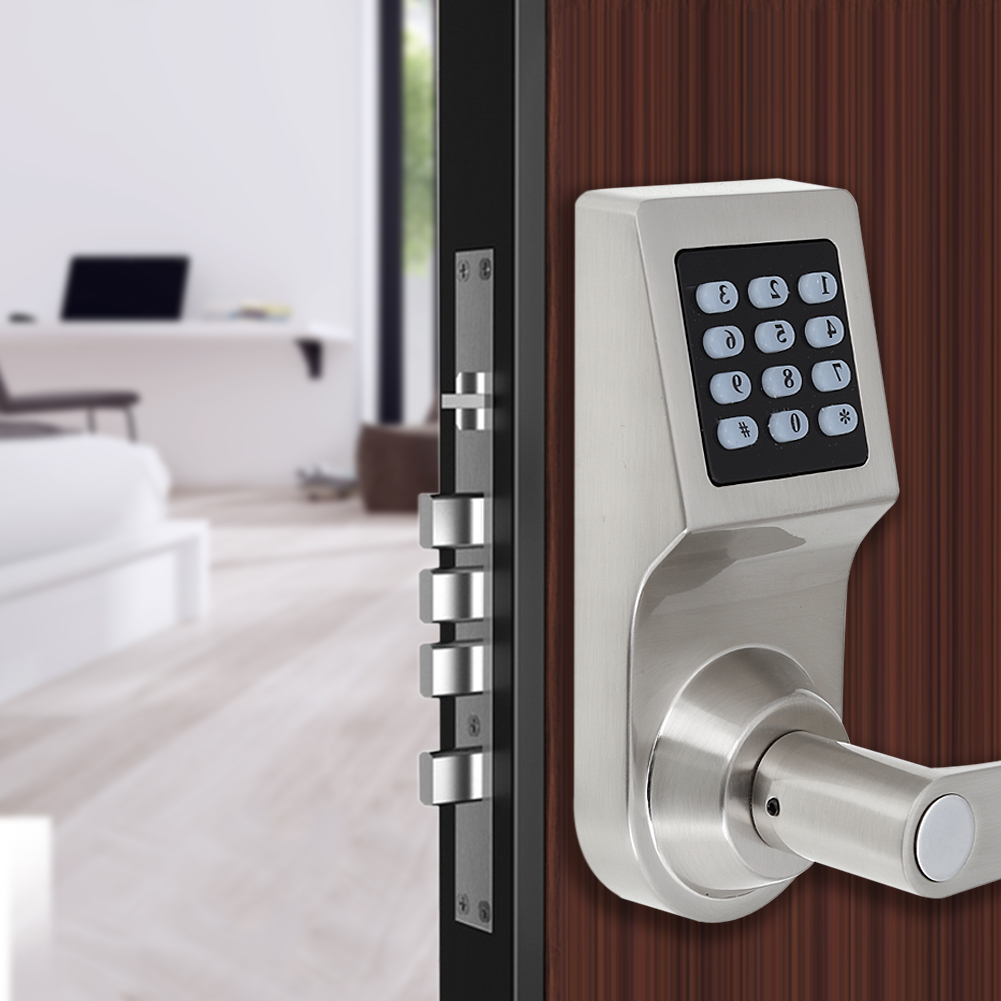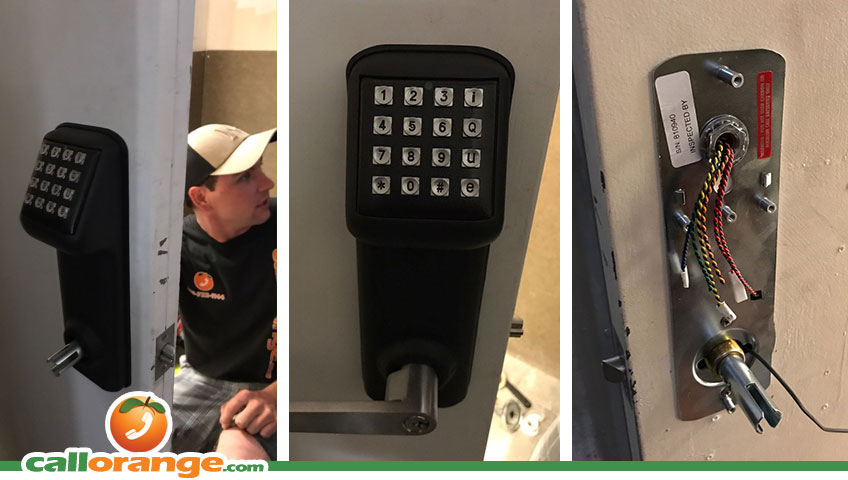

- #Door lock with keypad install driver
- #Door lock with keypad install full
- #Door lock with keypad install pro
- #Door lock with keypad install Bluetooth
With this lock, you can keep almost everything about your current setup, from the expensive deadbolt that matches your fancy lockset to the keys you already have printed.
#Door lock with keypad install pro
Yes, with included Wi-Fi (2.4 GHz) bridgeĪugust’s Smart Lock Pro requires minimal fussing and modification. The Encode is also compatible with Ring security systems via the Key by Amazon app, as well as Google Assistant. Once it’s connected to your home Wi-Fi, you can manage all functionality from anywhere using the app.
#Door lock with keypad install Bluetooth
The Encode uses Bluetooth initially, but once it’s up and running, it connects to a home Wi-Fi network without any hubs or bridges. The Schlage Home app required to set up the lock is clean and intuitive, making start up, management, and administration of the smart functionalities a breeze. Expect to spend 15 minutes setting it up.
#Door lock with keypad install driver
In terms of installation, it’s very straightforward, requiring only one screwdriver (though an impact driver would have helped us speed things along). Examining the deadbolt, it’s not hard to understand how it earned the rating-robust, heavy metal housings enclose both the interior and exterior mechanisms. Grade 1 is a mechanical quality rating, requiring the deadbolt to withstand 250,000 cycles and 10 door strikes with a hammer. Where it differs, however, is in its ANSI Grade 1 rating-the highest rating for locks. Schlage’s Encode smart deadbolt offers similar features to many other locks on the market and in this review.

If you’ve been thinking about getting a smart lock, we’ve included all the information you’ll need to help pick the best model. We took care to test all of the smart locks’ features and factored in aesthetics.

We then locked and unlocked them remotely using our smartphones while reviewing the video feed, and confirmed lock status via the manufacturers’ apps. We installed all of the locks in a single test stand, took them off-site, and set up a live video feed to monitor functionality. To connect the smart locks to the internet, we used a wireless network with a average of 25 Mbps. We then paired them with our smart phones, ran through the setup processes, and tested Bluetooth functionality. To test the locks, we installed each lock into a metal exterior door to assess fit and ease of installation. For locks we haven’t gotten our hands on, we heavily researched them based on a core list of criteria and our experiences with similar products. We researched the landscape, surveyed user reviews with Fakespot analysis to ensure their authenticity, spoke with product managers and engineers, and used our own experience with these smart locks to determine the best options. The locks on this list have been thoroughly vetted and evaluated by our editors. Many smart locks also come with mechanical keys alongside their "smarter" unlocking methods for physical entry as well. Other options come with keypads or fingerprint scanners for direct access without the need for your smart device. Many smart locks work directly with your phone or connect to your smart home assistants for easy locking and unlocking from your device.

The physical manner in which you use your smart lock to lock and unlock the door makes a legitimate difference considering the high frequency of usage. Using Z-Wave avoids competition for bandwidth and interference on your Wi-Fi network, which is important because there may be dozens of smart devices in a fully automated smart home.
#Door lock with keypad install full
If you already have a Z-Wave hub and are planning to add more devices or a full security system, you might consider going this route. Z-Wave is a low-energy radio signal, like Bluetooth but with a stronger signal and more robust encryption. You can then control these locks with an app from a smart phone or home hub. Smart locks with Z-Wave have to connect with a Z-Wave hub, which in turn connects to your Wi-Fi network. Note that locks with built in Wi-Fi will drain batteries faster than low-energy radio waves, like Bluetooth or Z-Wave. For example when you tell your smart assistant “goodnight,” you can have a smart thermostat lower the temperature, turn off all lights, and send a command to ensure your door is locked. You can then automate them into smart home routine actions. They may also connect to or be integrated with security systems, smart home devices like Google Nest Hub and the Echo Show, or Apple’s HomeKit. Smart locks with Wi-Fi built-in, and connected to your home network, work with an app on a smart phone for remote operation and monitoring. This $29 Gadget Makes Your Old Home Smart.Smart Home Tech To Automate Your Morning Routine.


 0 kommentar(er)
0 kommentar(er)
